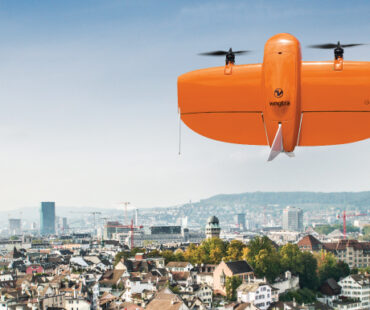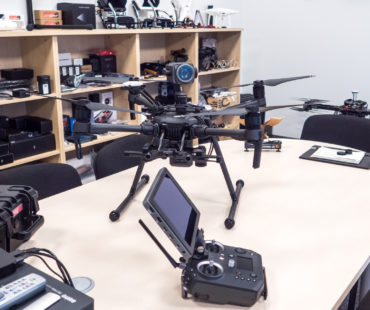If European regulators have their way, drone operations in the European Union (EU) are going to become very permissive, far outpacing American regulations. The European Aviation Safety Agency (EASA), the EU’s authority for aviation safety, has released a regulatory framework that calls for new regulations to be proposed by December of this year.
In their proposed framework, the EASA has specifically focused on innovation, saying that regulations must “not simply [transpose] the system put in place for manned aviation” but rather must create “one that is proportionate, progressive, risk based and…[expresses] objectives that will be complemented by industry standards.”
Officially sanctioned European drone operations far outpace American drone operations. In the EU there are 2,495 operators of drones weighing less than 150kg (330 pounds), the EASA believes that number to be the largest amongst worldwide operations where just 2,342 operators are flying in the rest of the world combined (with 2,000 of those sanctioned operations taking place in Japan).
The pace of industry growth in the EU, and the potential for small and medium sized business opportunities prompted the agency to write, “Drones should be integrated into the existing aviation system in a safe and proportionate manner and this integration should foster an innovative and competitive European drone industry, creating jobs and growth.”

The EASA recognizes that drones are developing at a rapid pace worldwide and in particular in EU countries. To accommodate these technological developments the EASA proposes three categories of drone operations.
Open
- Designed to allow simple operations and to allow small and medium sized businesses to gain experience.
- Drones in this category will not require any authorization by aviation authorities for flight, so long as the operation stays within defined boundaries.
- Overseen by local police in the same way that automobiles are dealt with by local authorities.
- Aviation authorities will have no involvement in these operations, even for commercial operations.
- No airworthiness approvals or licenses for operators or pilots. However industry standards may be applied to the airworthiness requirement. Some industry standards may involve safety features like parachutes or mitigation of failures through software and redundancy.
- Risk to other airspace operators is mitigated through separation from manned aviation. Specifically, the drone must be flown within direct visual line of sight of the operator, at an altitude not to exceed 150 meters above the ground or water, and outside of specified areas (such as airports, areas protected for environmental purposes, or areas like military installations that are cordoned off for security purposes)
- To mitigate risks to persons on the ground, the aircraft will be low energy and will need to remain a safe distance from people on the ground.
- Flights above crowds will be prohibited, but flights above people not related to the operation in cities or populated areas will be allowed.
- Toys weighing less than 500g (1.1 pounds) will be exempt from industry standards.
Specific
- This category is for those operations that pose significant aviation risks to persons on the ground or which involve sharing airspace.
- Operations in this category require an assessment of each aviation risk, and mitigation steps that are agreed to with aviation authorities prior to the operation.
- Approved operators who have been granted the privilege of conducting their own risk assessment and mitigation techniques need not apply to the aviation authorities on a case by case basis, and can instead self certify their operations so long as they take place in non-segregated areas.
- Operations can be approved by national aviation authorities or by a specially approved organization known as an accrediting body.
- The minimum level of safety for airworthiness will be based on the results of a safety risk assessment. That assessment may allow compliance with industry standards to satisfy the necessary mitigation of risks, or it may require specific limitations on the operations, special qualifications for the personnel, or other considerations. In some risk situations, the drone itself may need to be certified, or specific safety devices may be required by the approval authority.
- The airworthiness assessment is closely linked to the operational environment, thus operations close to crowds could be acceptable when the vehicle has some additional functionality (e.g. automatic loss of link procedures, impact energy limiting devices, etc.).
- The required competence of involved staff will also be established on the basis of the safety risk assessment.
- An operations manual will be required to define operating procedures, airworthiness and competence of involved staff.
Certified
- This category will be required for operations that pose aviation risks akin to normal manned aviation operations. These operations and the aircraft involved will be treated like ordinary aircraft in the classic aviation sense.
- Such operations may be requested on a voluntary basis by organizations providing services such as remote piloting or employing ”detect and avoid” equipment.
- This category may in fact not be necessary if the “Specific” category has no upper limit for riskier operations, however the EASA recognizes that a more regulated approach may be necessary for “political reasons” or convenient for “practical reasons.” Political reasons are those such as the public fall-out from learning that a drone the size of a 737 is not certified, while practical reasons may be that a more regulated approach could limit the number of safety risk assessments that need to be performed by aviation authorities.
- Type certificates may be required that deal with matters such as airworthiness, noise, capabilities, etc. Different configurations would also need to be addressed, looking at fixed wing, rotorcraft, airship and powered lift operations.
- Certification specifications would address not only the aircraft, but also the control station, command and control systems, and detect and avoid functions.
- Maintenance above a predetermined threshold would be performed in approved organizations and maintenance personnel would be licensed or otherwise certified.
- Pilots would be licensed and the operator would receive organizational approval.
- Flights in non-restricted airspace would be subject to a safety assessment conducted by the ATS provider.
What is proposed here is actually very innovative and very progressive. The EU is looking to implement a true risk based approach to regulation of drones, from the smallest drones all the way up to Airbus A320 size.
On a lighter note, to give you an idea of just how progressive the EASA is, they’ve even given up on the tired debate about what to call drones. They recognize that the technical term for drones might be “UAS”, “unmanned aircraft systems,” “remotely piloted aircraft systems,” or “RPAS”, yet the agency said these terms “are replaced in the common language by the word drone and this document will accordingly use drones to speak of UAS and RPAS.” (Thank you for that, the drone language debate was getting old).
Not only are these regulations innovative, The EASA is also looking to fast track them. Consultation on concrete proposals is slated for June, 2015 and presentation of the final regulatory proposal to the European Commission is slated for December of 2015. Drone innovation is coming, and it looks like we may see it first in Europe.
Original article from (Forbes)





